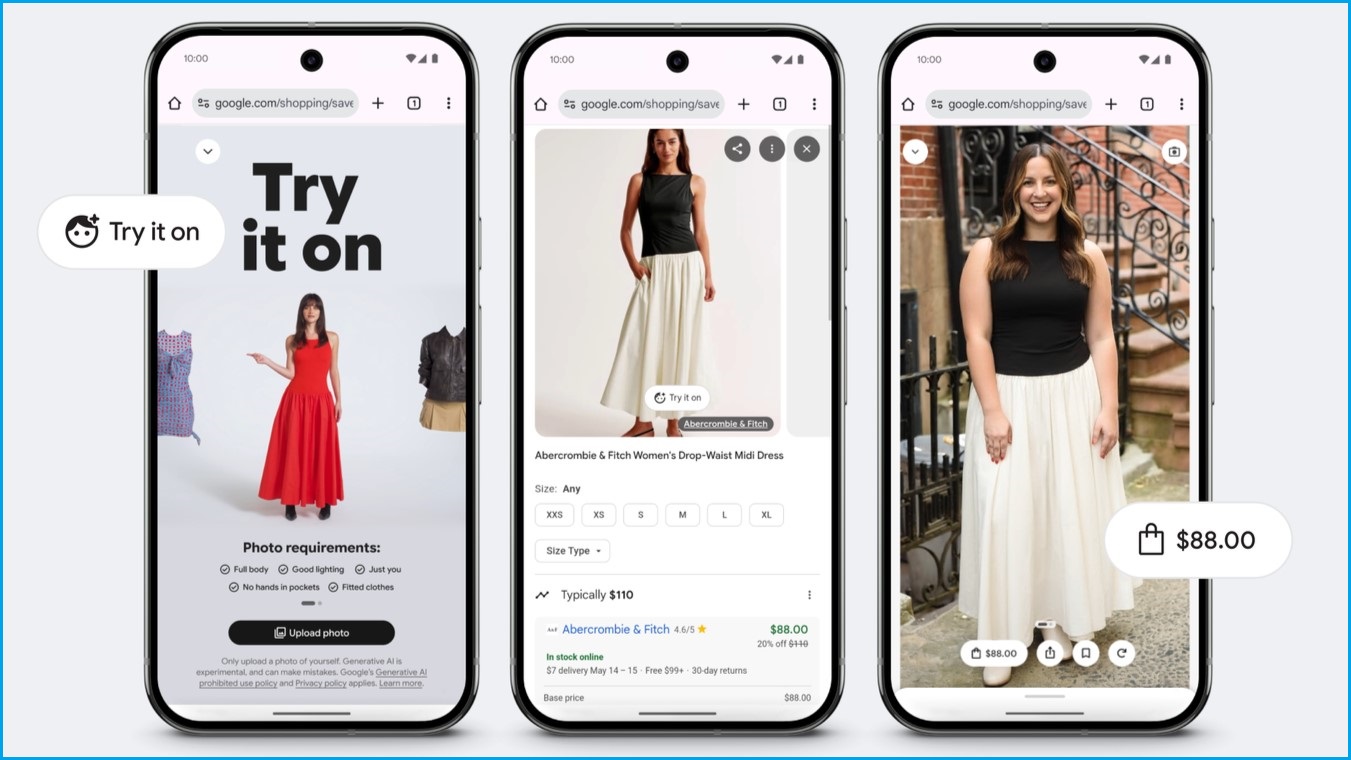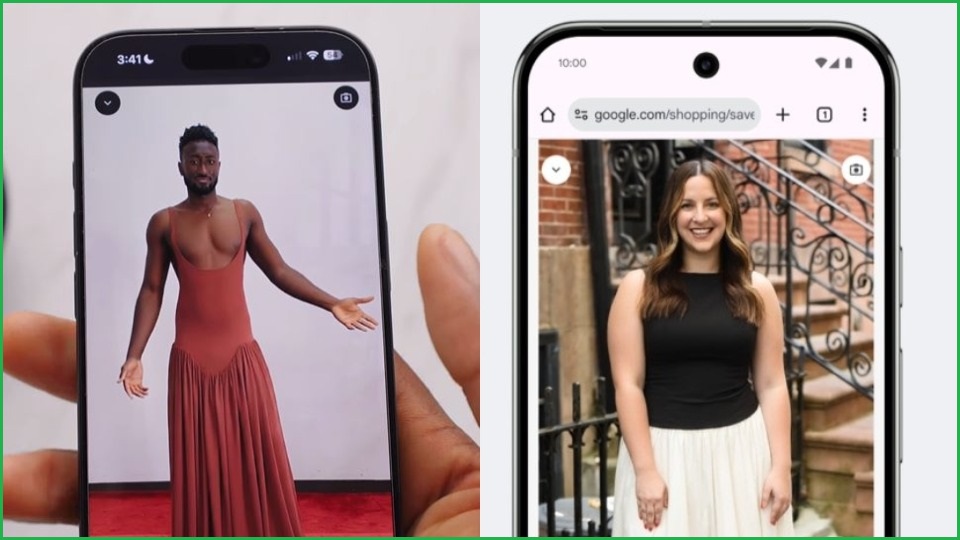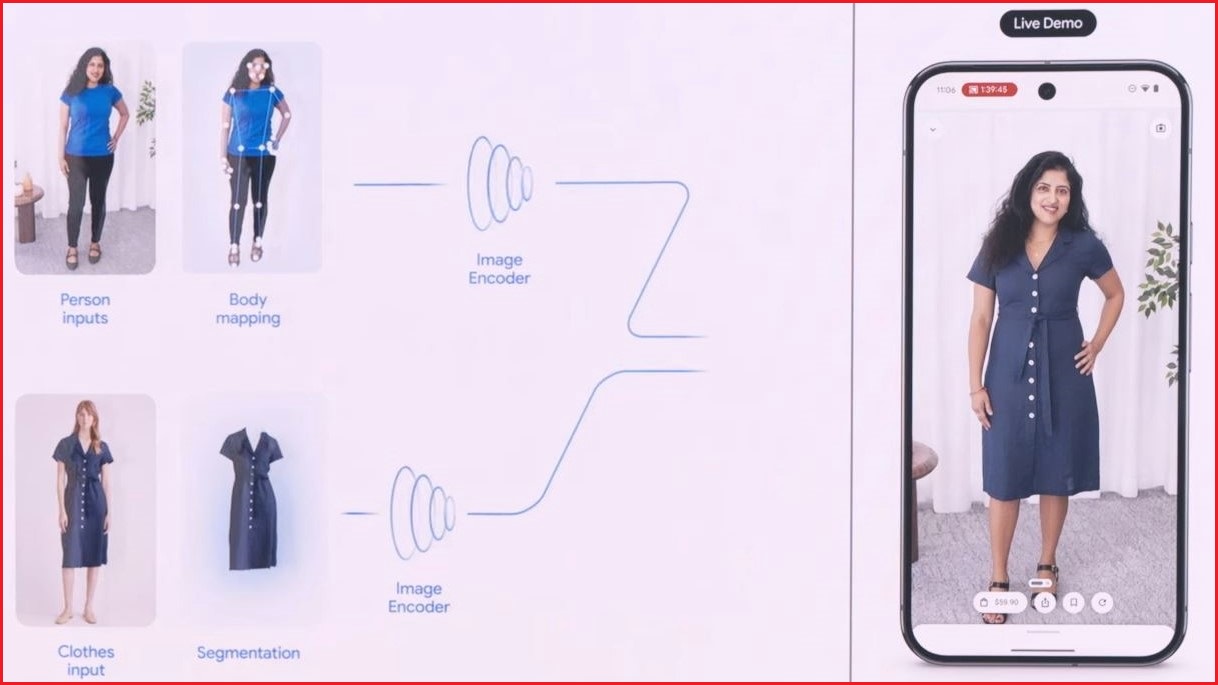Google says it has implemented “strong protections” for privacy into a new artificial intelligence model designed to allow users to try on clothes virtually, after some commentators raised concerns because the system allows testers to upload and manipulate photos of almost anyone.
The feature, dubbed ‘Try it on’, is being tested in the United States after the technology giant unveiled the new generative AI model at its annual I/O conference in California on Wednesday, Australian time.
While Google is testing a version of ‘Try it on’ which tells users to “only upload a photo of yourself”, nothing technically prevented them from using images of other individuals, raising concerns about people’s likenesses being made to dress in potentially risqué or embarrassing outfits without consent.
Technology reviewer and YouTuber Marques Brownlee (also known as MKBHD) said he tested the feature and found an “obvious downside” was that users did not need to use photos of themselves.
“You should only use photos of yourself, but you don’t have to,” he said in a video posted to social media.
“… It happily generated a photo of me in a dress.
“I guess we’re going to keep barreling towards this whole ‘AI future’, huh?”
Another social media user managed to generate an image of themself wearing a T-shirt with text on it which read, “You make me want to squirt.”
What’s more, Google said on Wednesday that users could “easily save the looks or share with friends” after they had generated 'Try it on' images.
Google's new AI "Try On" feature pic.twitter.com/KYZfue3Poh
— Marques Brownlee (@MKBHD) May 20, 2025
‘Sensitive’ clothing and images of minors blocked
A Google spokesperson told Information Age the company has implemented “strong protections” into the 'Try it on' feature, “including blocking sensitive apparel categories and preventing the upload of images of clearly identifiable minors”.
The company said the system would automatically block the use of clothing categories such as swimwear and lingerie.
"As with all image generation, it won’t always get it right, and we’ll continue to improve the experience,” the spokesperson said.
Google said its policies did not permit users from uploading images of other people, but users who have tested the system appeared able to do so.
Google says its AI 'Try it on' feature uses a custom image model with a high degree of accuracy. Image: Google / YouTube
The company also told CNET that uploaded images would not be used for AI training purposes and were not “shared with other Google products, services or third parties”.
Similar virtual fashion systems have been used by retailers (and even Google) in the past, but have often used images of models — and while some AI tools already offer similar personalisation to ‘Try it on’, Google’s version appears more lifelike than most and would be much more widely accessible if it passed the testing phase.
Even Google’s vice president of product management, Lilian Rincon, said the ‘Try it on’ feature was “the first of its kind working at this scale”, with billions of possible items of clothing.
“It’s powered by a new custom image generation model for fashion, which understands the human body and nuances of clothing — like how different materials fold, stretch and drape on different bodies,” she wrote in a blog post.
“It preserves these subtleties when applied to poses in your photos.”
A new agentic AI checkout system would also help users track the prices of items and buy them at the best time, Google said.

Google says 'Try it on' will also help users track clothing prices and make purchases at the optimal time. Image: Google
Google's AI still ‘raises the bar’ in virtual shopping
Google’s continued expansion of its AI technologies into shopping still marked “another big step forward in how technology is personalising and simplifying the path to purchase”, according to Hayley Fisher, the Australia and New Zealand country manager for Dutch fintech firm Adyen.
“Features like virtual try-on and agentic checkout raise the bar for what ‘frictionless’ and ‘personalise’ really means for shoppers,” Fisher told Information Age.
“This announcement also came at a time where we know the demand for this technology in Australia is ripe.”
Almost a third of the 2,000 Australians polled for Adyen’s 2025 Annual Retail Report said they used AI when shopping, with more than half saying it helped inspire their decisions on outfits and meals.
While almost half of Generation Z and Millennials said they used AI when making purchase decisions, one in 10 Australians surveyed said they had used AI to shop for the first time in the past 12 months, according to the report.
“Australian consumers are embracing AI at an incredible pace as they explore how it can enhance and personalise their shopping experience,” Fisher said.
Google’s launch also comes as the company faces increasing competition from genAI services such as OpenAI’s ChatGPT, which more consumers are turning towards when making purchasing decisions — challenging Google’s dominance of the search engine market.
In the Asia-Pacific, 38 per cent of respondents to Adyen’s survey said they had used ChatGPT or a similar AI assistant to help them shop during the past 12 months.
But across the 41,000 consumers surveyed across 28 countries, 23 per cent said they did not use AI assistants because they did not trust them or feared bad recommendations.











